How to keep a lip tattoo from fading? That’s the question we get asked by almost every client before or after their first lip blush session. And it’s a good question because lip tattoos aren’t “forever” — they’re semi-permanent and the way they age is just as much dependent on your daily habits as on our technique.
We’re Uliana Kasperska and Anastasia Petkov, licensed cosmetic tattoo artists in Brisbane. Between us, we have over 15 years of tattooing lips from soft blush pinks to deeper berry tones. In this guide, we’ll share what really makes a lip tattoo last, what causes fading and the kind of aftercare and lifestyle tweaks that will keep your colour fresh for years.
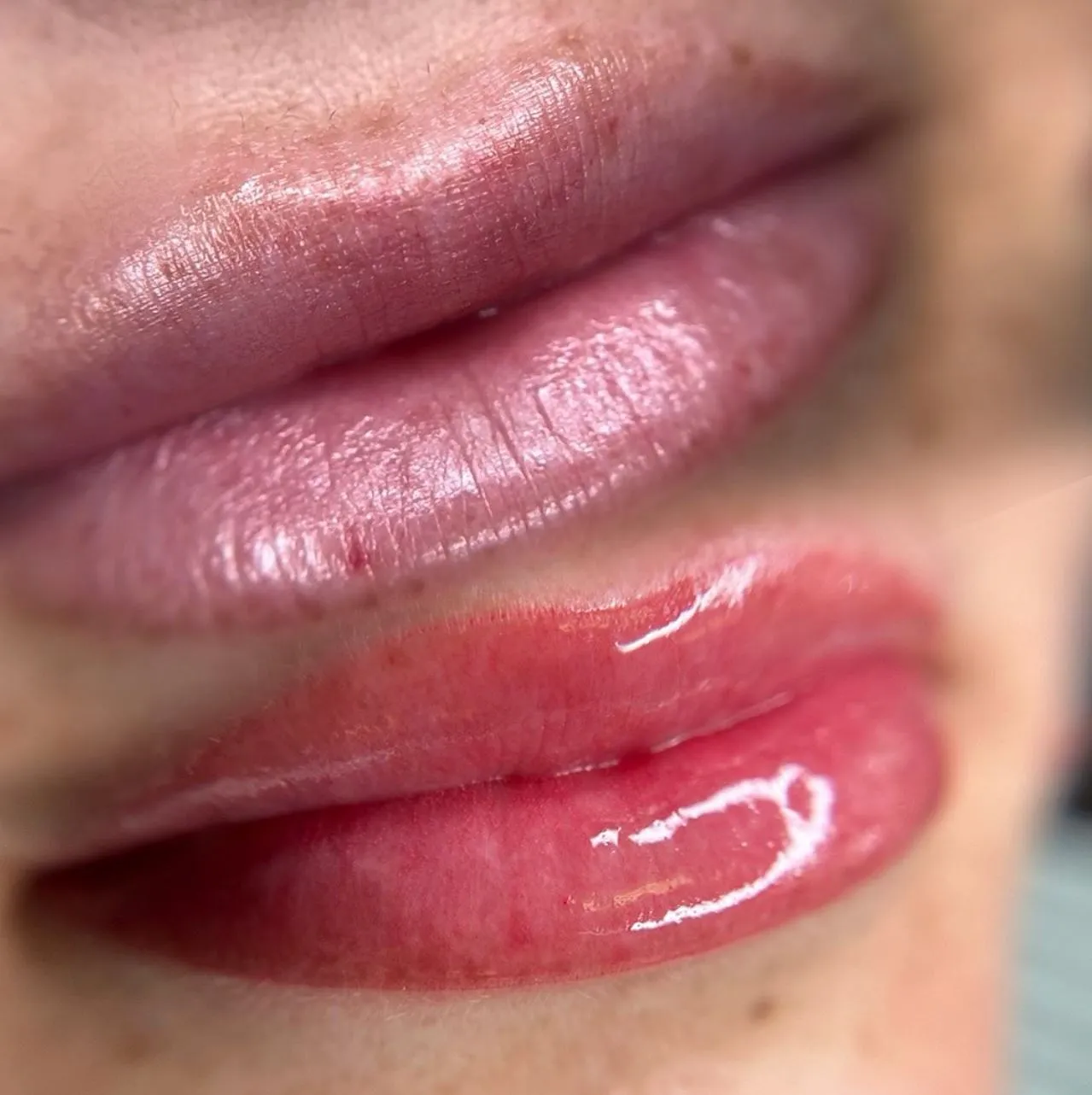
Table of Contents
Why Lip Pigment Breaks Down Faster
Unlike brows or eyeliner tattoos, lip tattooing has more environmental and biological factors working against it. Your lips aren’t just decorative — they’re constantly exposed to food, drinks, skincare products, sun exposure and even chlorinated water from swimming pools. Add the constant cell turnover of lip skin (faster than most other areas of the face), and it’s no wonder colour fades faster.
Permanent makeup pigments, especially coloured inks like reds and pinks, fade faster under UV rays compared to darker pigments. Brisbane’s high UV index makes SPF lip balm a non-negotiable if you want to extend your lip tattoo’s healing period and long-term lifespan.
We always remind our clients: fading isn’t a failure of the tattoo artist. It’s a natural part of semi-permanent makeup — and something you can slow down with the right daily care.
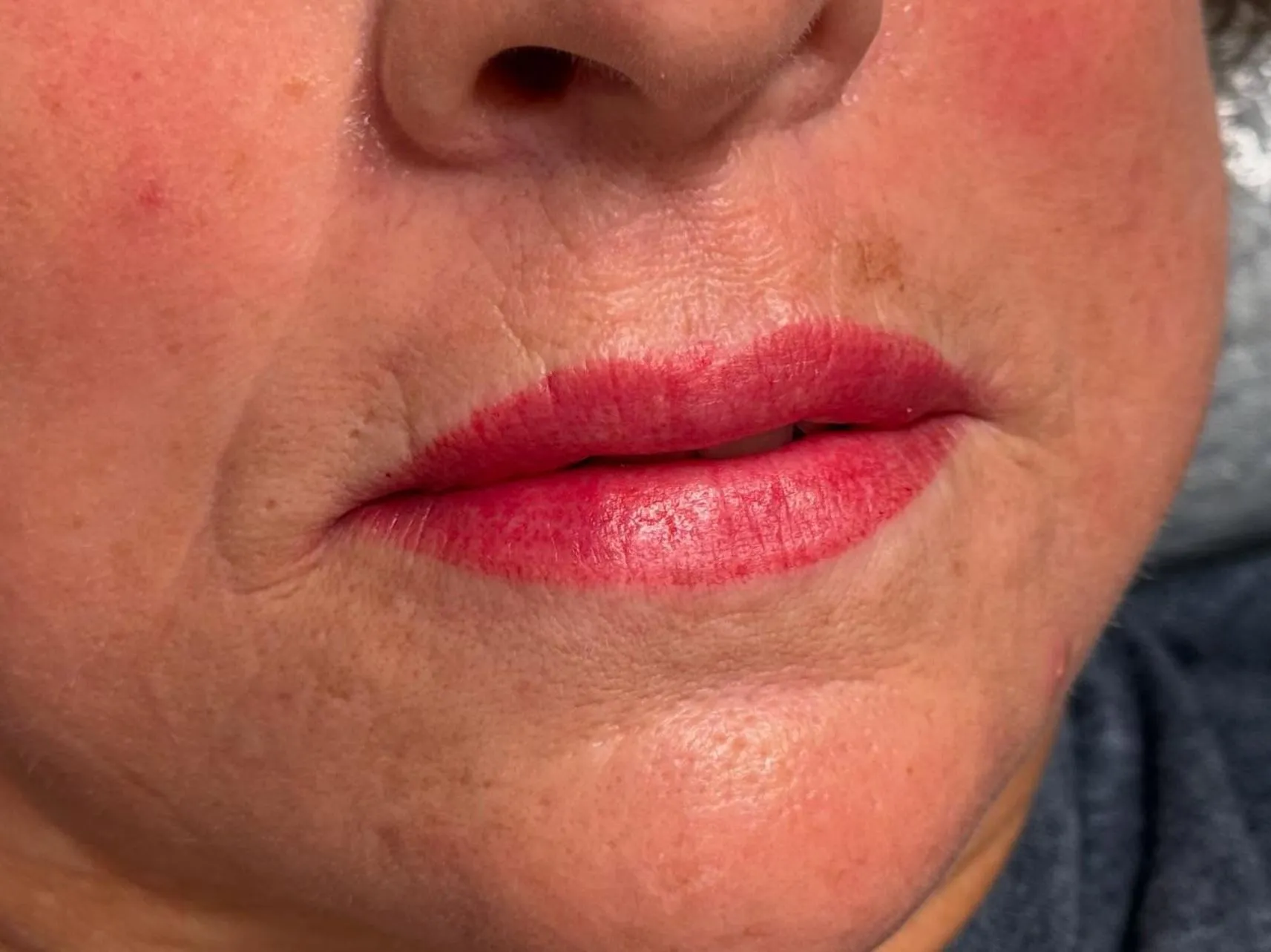
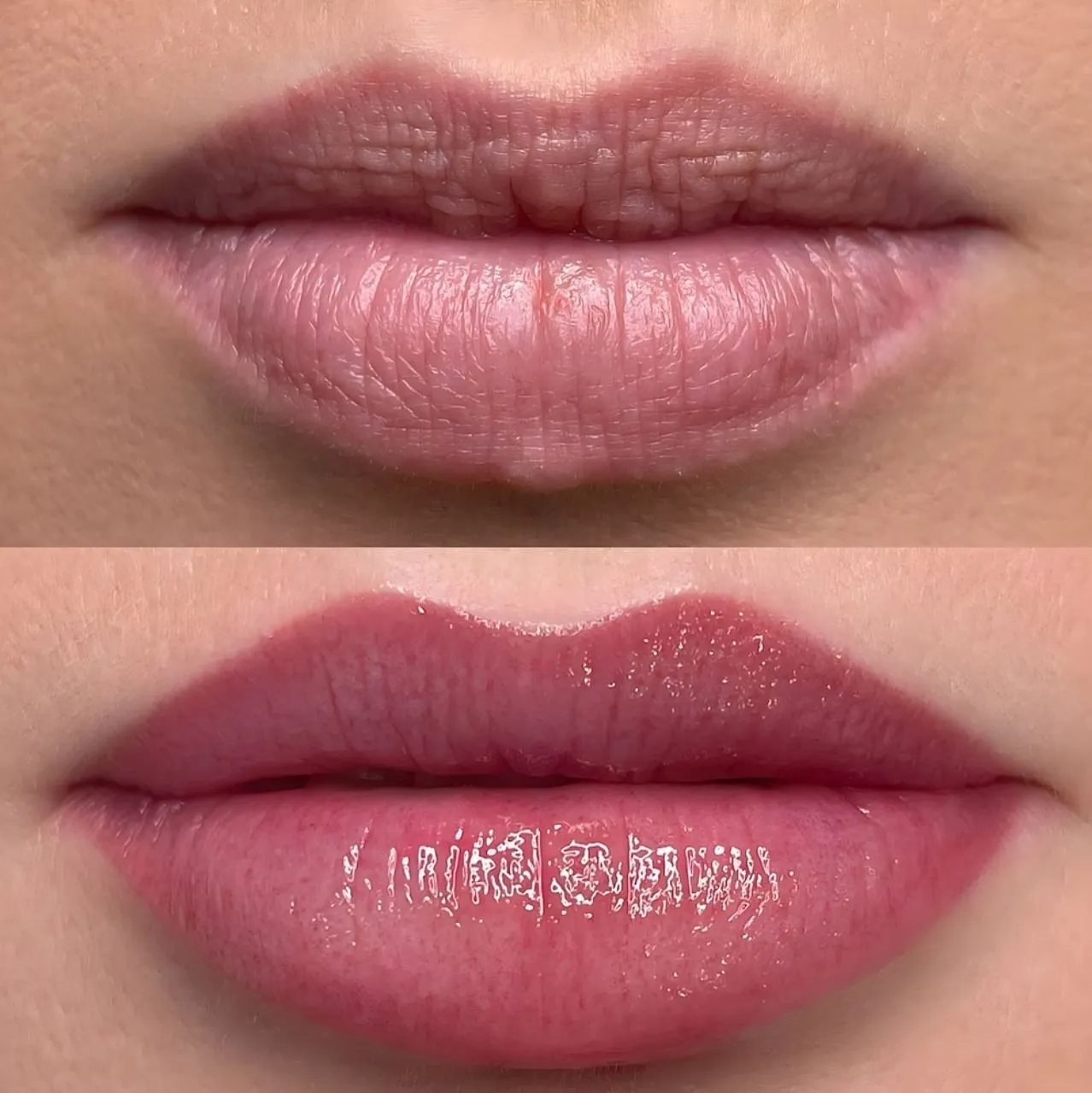
Make Or Break Your Results
Aftercare Tips
- Keep lips clean and dry for the first 48 hours.
- Use only the healing balm or tattoo balm provided — no petroleum jelly or heavy ointments.
- Avoid kissing, spicy food or alcohol-based drinks during the first week.
- Use alcohol-free or antibacterial mouthwash to maintain mouth hygiene.
- Avoid swimming, saunas and chlorinated water until healed.
- Apply SPF lip balm once peeling has finished to protect against UV rays.
We always tell our clients: lips fade more from what you do after the appointment than from the tattooing itself.
Lifestyle Factors That Speed Up Fading
Even perfect technique and flawless aftercare can’t stop certain habits from accelerating the fading.
- Sun exposure and sun tanning → UV rays break down pigment quickly.
- Smoking → Nicotine restricts blood flow, impairs wound healing and pigment implantation.
- Active skincare ingredients (retinol, glycolic acid, strong exfoliants) → These can spread onto lips and fade pigment.
- Frequent lip filler treatments → Can displace pigment if done too soon after tattooing.
- Iron deficiency → Low iron can impact pigment retention, as red ink relies on iron oxide stability.
- Laser facials → Certain lasers (especially for skin rejuvenation) can cause pigment breakdown.
We’ve noticed in Brisbane that clients who are outdoor enthusiasts (beachgoers, surfers, runners) see quicker tattoo fading unless they’re diligent with SPF reapplication.
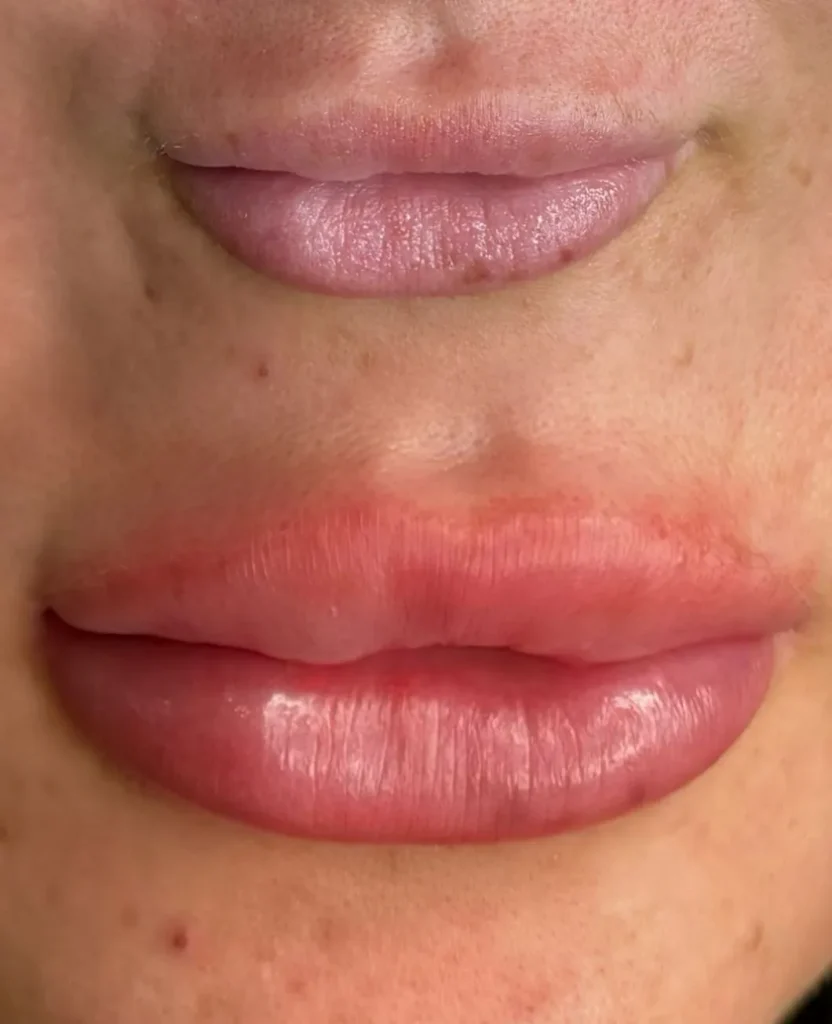
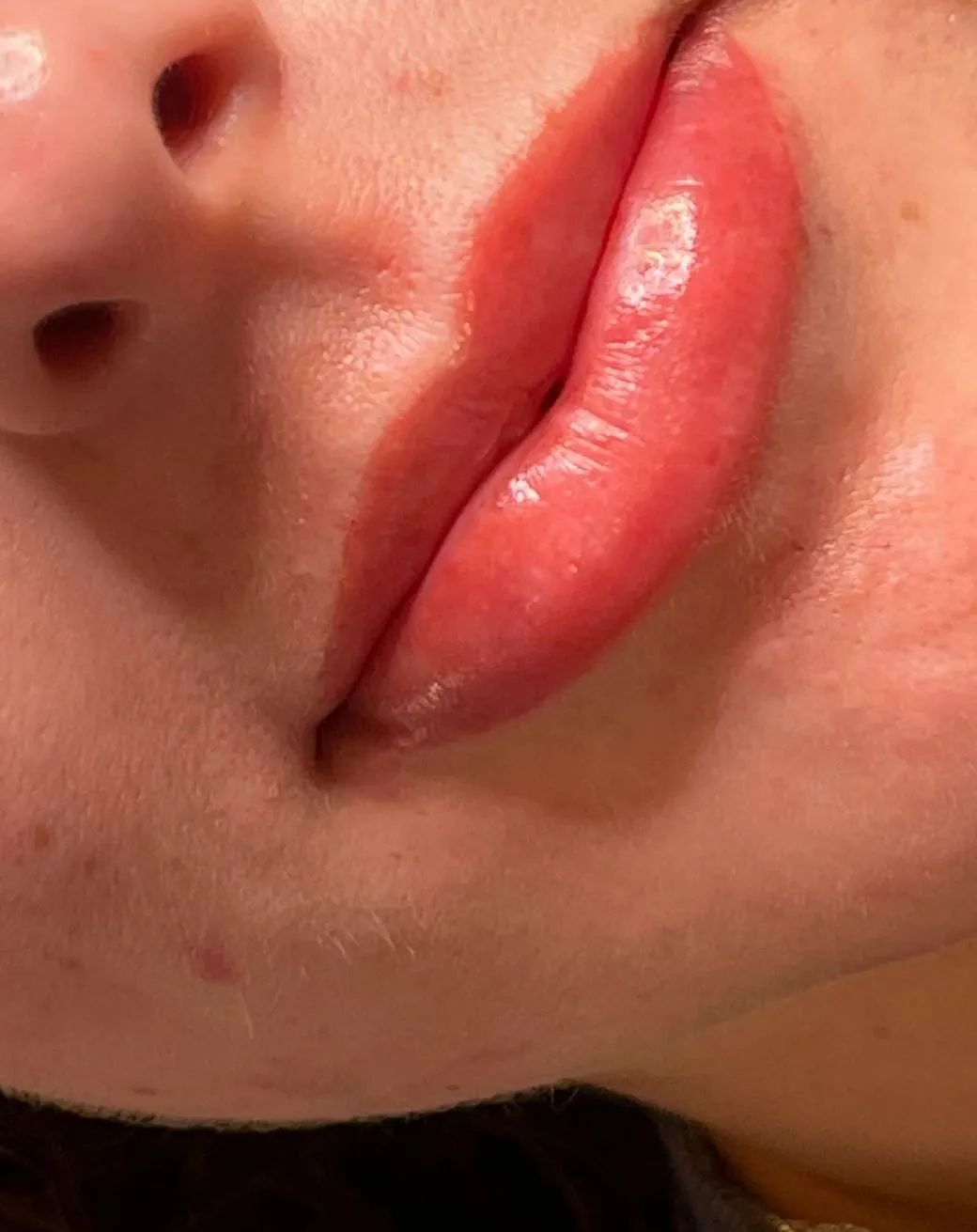
The Role Of Skin Type And Health
Not every lip tattoo heals the same way. Factors like oily skin, dehydrated skin and immune response all affect colour.
- Dry or dehydrated skin → May flake excessively, leading to patchy healing.
- Oily skin → Pigment may fade faster.
- Cold sore virus (Herpes virus) → Outbreaks disrupt pigment settlement.
- General health → Poor wound healing or chronic conditions can reduce retention.
If you’ve ever had issues with semi-permanent makeup before, be upfront with your tattoo artist. We can adjust technique (like using a dotting technique) or pigment depth to improve your results.
Shade Selection And Colour Retention
It’s not about what looks good on Instagram — it’s about what lasts.
- Fair skin → Soft pinks, peach tones.
- Olive skin → Coral and rose shades.
- Darker skin → Berry or brick tones.
- Inner lip tattoos → Fade much faster due to saliva and constant friction.
Pigments fade differently: red ink tends to lose brightness faster, while cooler tones may shift if not colour-matched properly. The right cosmetic tattoo pigments fade gradually and naturally, not into odd undertones.
The Secret To Longevity
Lip blushing is a two-step process. Your first session lays the foundation, but your touch-up at 6–8 weeks seals the deal.
Skipping this perfecting session means your lip line may heal unevenly or you’ll lose 30–40% of the colour. Long-term, we recommend colour boosts every 2–3 years, depending on lifestyle and skin type.
Statistics On Lip Tattoo Longevity
- Average lifespan: 2–3 years before major fading
- Clients in Brisbane: usually 12–18 months before booking a colour boost
- Healing period pigment loss: 25–30% after the first cycle
- SPF lip balm users: tattoos last 6–12 months longer than those without protection (based on studio records and industry data, 2024)
Common Myths About Lip Tattoo Fading
- “It’s permanent.” Lip blushing is semi-permanent makeup — designed to fade naturally.
- “Fading means the tattoo artist did a bad job.” Not true. Lifestyle, skin type, and aftercare are bigger factors.
- “Dark colours don’t fade.” They do — they just fade slower.
- “Once it heals, you’ll never need touch-ups.” Semi-permanent means maintenance is part of the plan.
Client Experiences From Our Studio
One client followed aftercare to the letter — lip balm, SPF, no sun, no spicy foods — and her lip blushing tattoo still looked fresh 18 months later. Another went straight to a beach holiday post-treatment, sipping cocktails in the sun. Her colour retention dropped by nearly half before the touch-up.
Same tattooing technique, completely different results. That’s why we educate every client about realistic lip tattoo healing and maintenance.
Final Thoughts
So, how to keep a lip tattoo from fading? Simple: smart prep, strict aftercare, protection from UV rays and long-term touch-ups. Add in healthy lip care habits – like regular hydration, SPF lip balm, and not using harsh skincare products – and your semi-permanent lip tinting will last for years.
Still unsure if lip blushing is for you? Book a consultation in our Brisbane studio – we’ll walk you through the healing process, pigment options and realistic results for your skin type. Cosmetic Tattoo Studio Brisbane Face Figurati is where we help clients every week keep their cosmetic tattoos looking natural, soft and long-lasting.

Using only natural and eco-friendly components for cosmetics
Special unique receipes are the secret of our spa procedures.
Experienced and skilled staff will make your perfect day
Most of our beauties come from the recommendation
FAQ
How long does lip blushing really last?
Can cold sores ruin my lip tattoo?
Yes. The Herpes virus can disrupt pigment during the healing process. Antiviral medication is highly recommended before lip tattooing.
Will SPF lip balm actually help?
Yes. UV rays are pigment’s worst enemy. Daily SPF lip balm extends longevity.
Can I use regular skincare products on my lips during healing?
No. Avoid active skincare ingredients and use the provided healing balm until fully healed.
